'As Necessary as Bread' – Gabrielle Kannemeyer
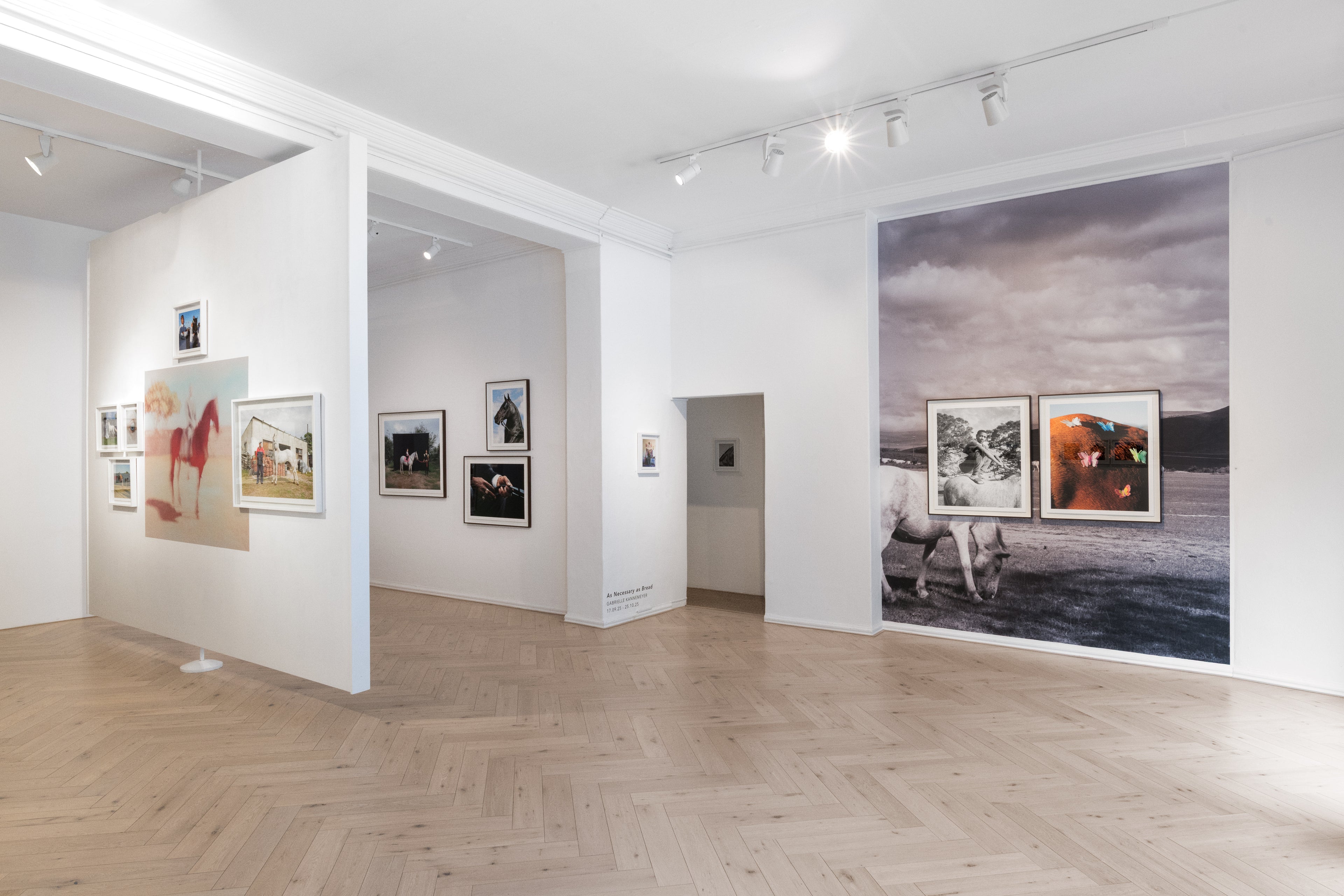
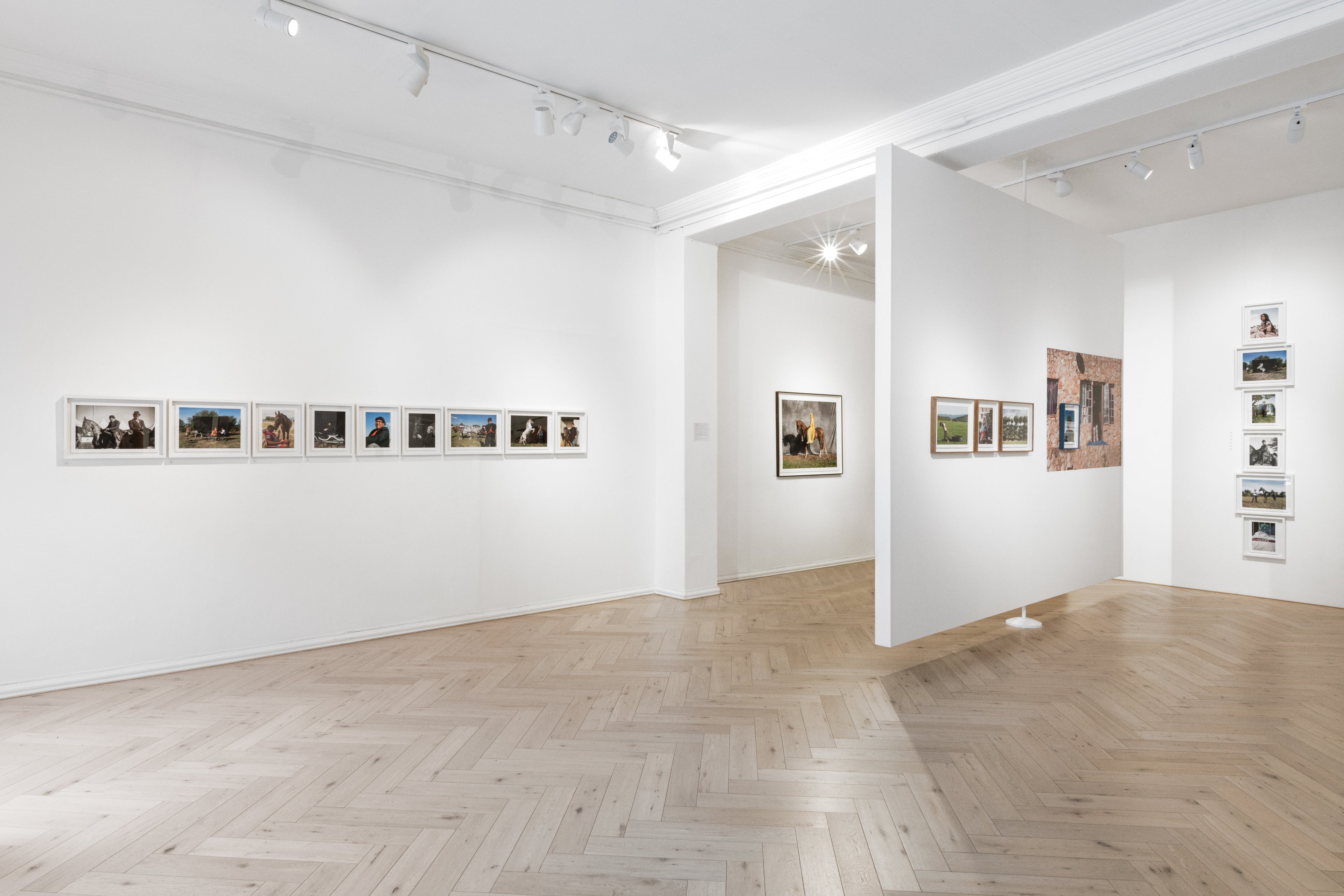
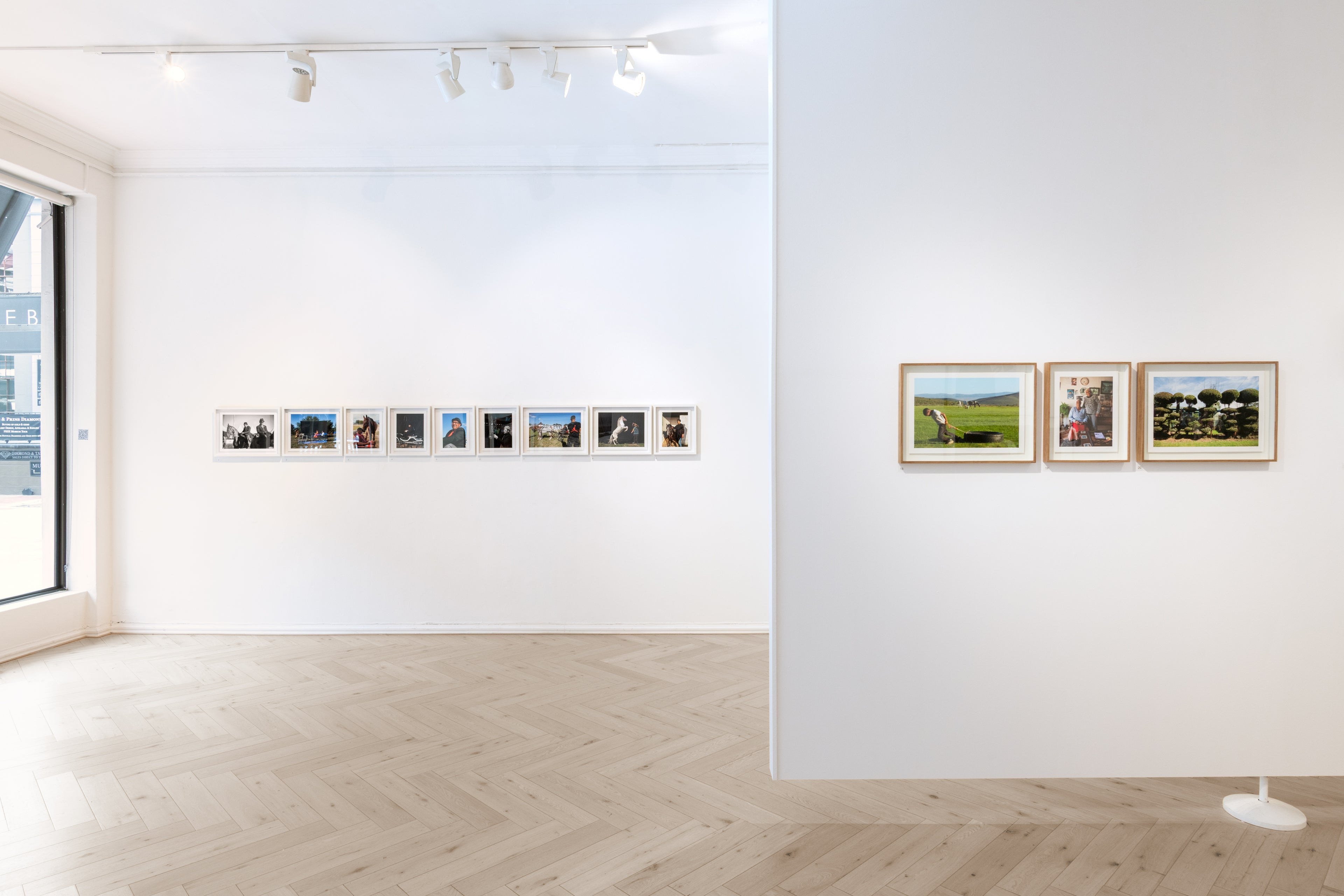
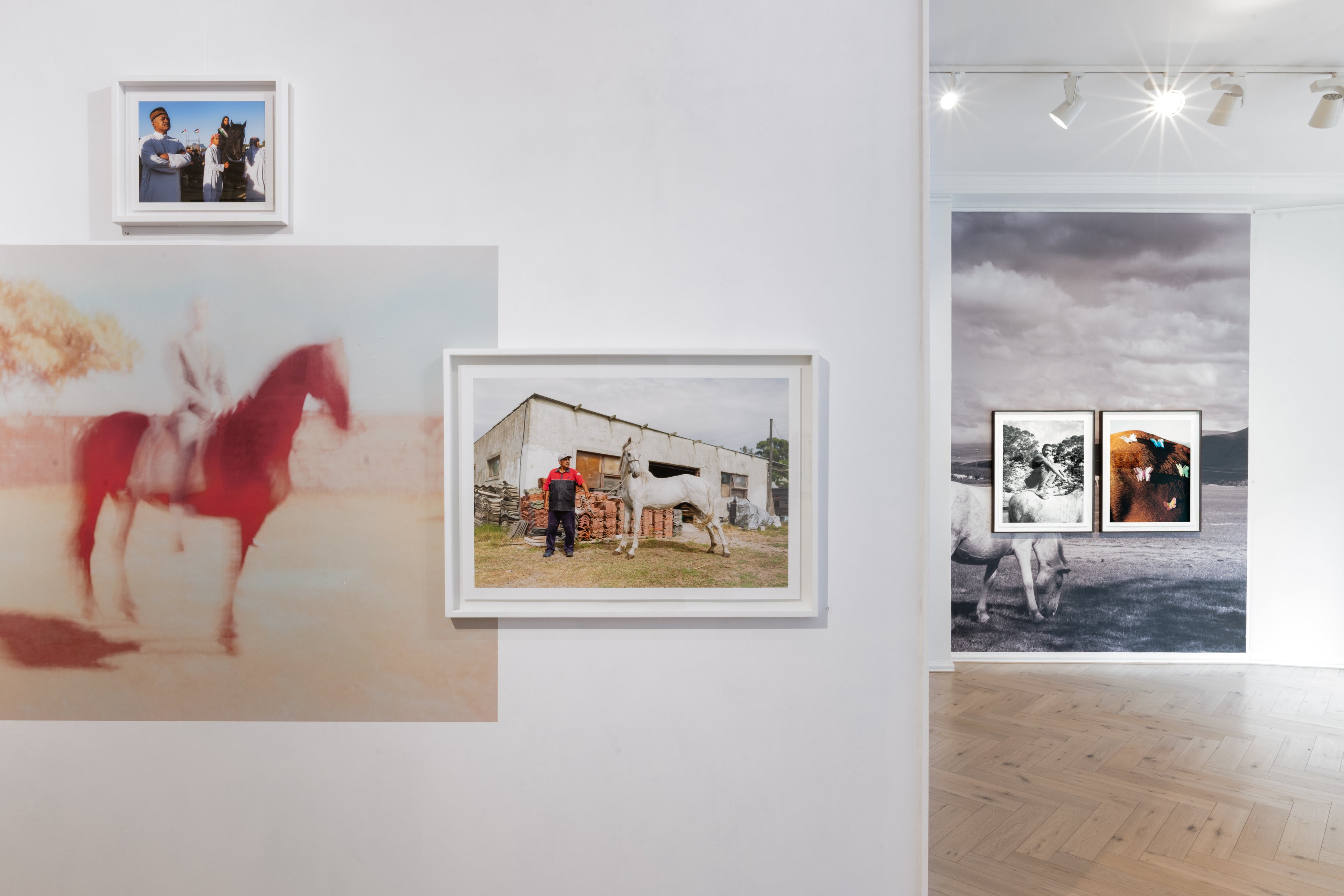
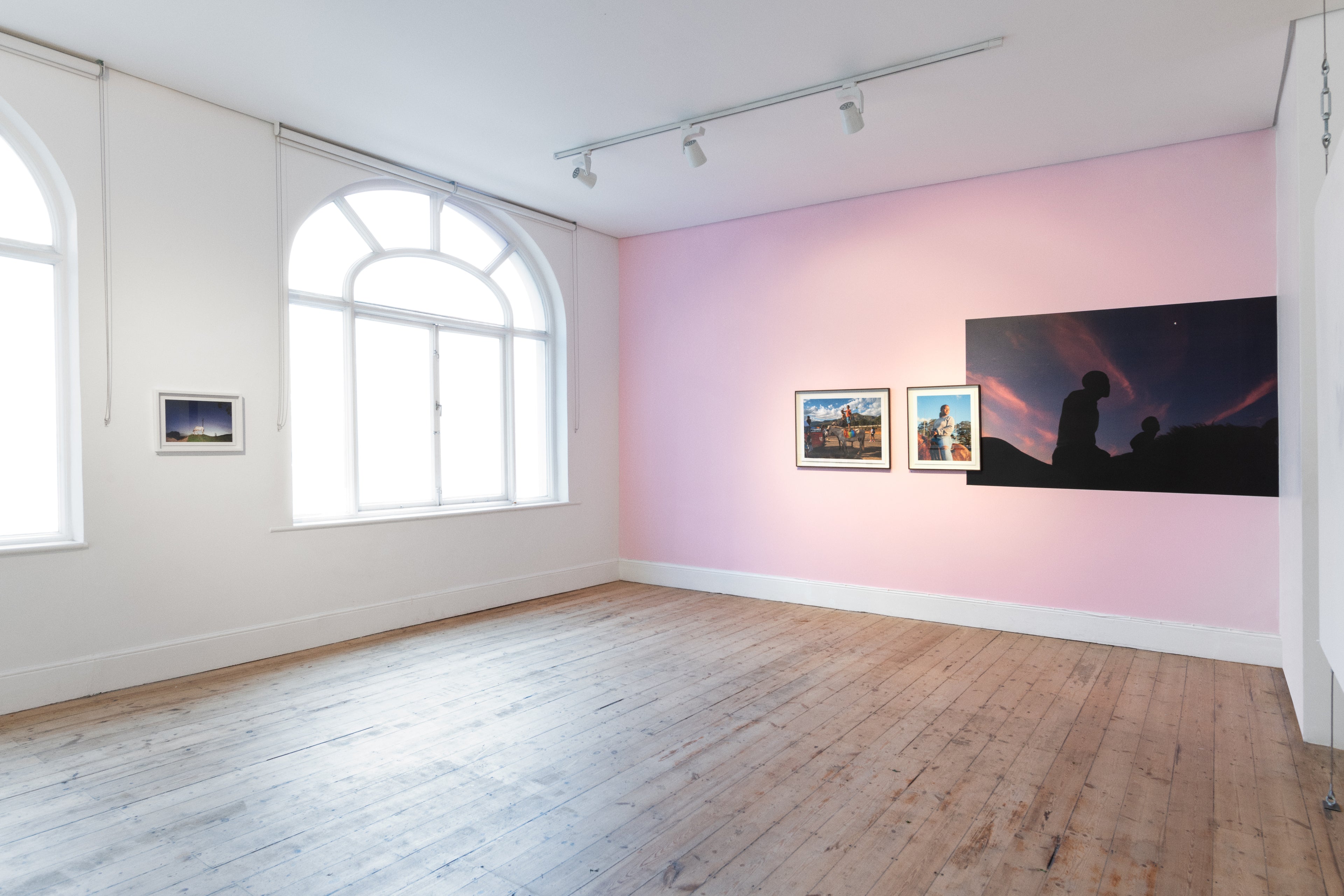
Collection: 'As Necessary as Bread' – Gabrielle Kannemeyer
Animals of No Burden: The Afterlife of Property
17.09.25 – 25.10.25
In “Why Look at Animals”, John Berger writes that animals once stood in the first circle around the human, mediating between us and our origin. In that encounter, the familiar and the unfamiliar disclose each other; “if the first metaphor was animal, it was because the essential relation between man and animal was metaphoric… what the two terms shared in common revealed what differentiated them.” In other words, we learned who we were, partly, by looking at animals, and by being looked at in return. If the first metaphor was animal, the first figure through which humans staged their likeness and unlikeness, then Blackness, as Richard Wright reminds us became the second: the site where humanity itself was tested, distorted, and denied. Both property and personhood simultaneously.
Visual artist and horse rider Gabrielle Kannemeyer situates her most recent work within this layered symbolic terrain. This presentation is the culmination of years spent photographing the horse cultures of her community, the Western Cape, and specifically the Cape Town and Overberg regions. Its title is borrowed from historian Sandra Swart’s book, Riding High. In it, Swart cites Dutch coloniser Jan van Riebeeck, who, upon arriving in the Cape, requested horses from Amsterdam, claiming they were as necessary as bread.
As Necessary as Bread takes this fraught inheritance as both subject and medium. Kannemeyer positions herself, through the lens, in front of her equine subjects and the people who tend, train, and ride them. In this configuration, both the horse and the photographer (inseparable from her camera) operate as unstable signifiers: figures whose meanings slip between domination and refusal. The horse recalls the infrastructures of colonial settlement and class division – van Riebeeck’s desperate petitions for beasts of burden to secure conquest. Yet within the communities Kannemeyer photographs, the horse is re-signified as a vessel of joy, dignity, and cultural inheritance. Similarly, the photographer, both insider and outsider, registers her doubleness: embedded within the community she documents, but also distanced by the frame that mediates each encounter. Both horse and photographer oscillate, carrying the tension of histories that burden them and the possibilities of futures they might reconfigure.
Both the images and their maker refuse to collapse into a single meaning. By staging the work and herself as a photographer in these multiple registers, Kannemeyer holds open the tension between its colonial and resistant significations, allowing both to remain legible in the frame. It is in these multiple suspended meanings that we find promise, as both vow and hope.
In one photograph, a young woman sits astride a chestnut horse, her yellow abaya and matching hijab cascading over the animal’s muscular flank. The horse’s head is held high, its mane and tail carefully groomed, its stance dignified against the neutral grey backdrop. The rider, poised yet serene, recalls the long history of equestrian portraiture, a genre once reserved for kings and generals. Big men of big power who sought to inscribe their authority and memorialise it by mounting themselves on statued horseback. Here, however, the image reconfigures that tradition: the composition exalts a young woman of colour, not as a passive subject but as a figure of sovereignty in her own right. The horse becomes both pedestal and partner, its vitality amplifying her presence, while the flowing fabric of her garment folds into the animal’s musculature, blurring lines between human and horse, tradition and spectacle, portraiture and performance.
Another image, in black and white, offers a different register of power. A young boy stands upright on the broad back of a white horse, his gaze meeting the camera with a mix of playfulness and pride. His horse stands steady, facing forward on the communal rugby field, while another turns away. They are part of the town's population of free-roaming horses, owned by local individuals. To the right, a group of young men gather. Some of the men are leaning on bicycles, while others have their legs firmly on the ground – forming a circle of witnesses and solidarity around the boy. Modes of transport, legs, bikes, horses, converge, marking gradients of mobility and belonging. The horse here is no longer only a symbol of power borrowed from imperial iconography; it becomes an axis around which communal life turns, a stage upon which joy and daring are enacted.
An avid rider whose passion was nurtured by her father and her familial community, she approaches the horse not as a neutral object but as a charged signifier. “The horse,” she explains, “was central to making South African society, both materially and imaginatively.” It is an emblem of colonial power, a marker of class stratification, but also a locus of resistance, pride, and belonging for communities historically excluded from dominant equestrian narratives.
Equally, Kannemeyer resists reducing those in her frames to objects of representation. Riders, handlers, families, and horses appear not as fixed subjects but as collaborators in what she calls a living or “counter-archive”. This archive unsettles the class-coded and racialised pictorial traditions that have romanticised equestrian culture in South Africa by re-inscribing presence, celebration, and complexity where erasure has prevailed. Says Kannemeyer: “Heritage is an active, embodied negotiation rather than a static inheritance.” To photograph, in her practice, is not to extract but to join in that negotiation, to make visible the rights to leisure, spectacle, and tradition that are too often denied to communities of colour. In this sense, the camera and its images become not only a tool of mediation but also a participant in the cultural practice of belonging.
But this negotiation cannot be disentangled from the longer histories in which Black and brown bodies, like horses, were positioned simultaneously as tools (labouring instruments) and as living beings (not quite human, in need of domestication). Frederick Douglass captures this entanglement in the opening lines of his 1845 Narrative, when he recalls knowing his age no more than a horse might know its own. The adjacency shocks: enslaved people and animals as twin captives of modernity’s extractive order. But Douglass pushes further, imagining the horse as an unlikely comrade. An animal whose life, like his own, oscillated between organism and commodity, interiority and denial. If animals were afforded structures of care denied to the enslaved, then kinship here emerges through contradiction: empathy twined with envy, pity shadowed by rage.
If the horse, like the Black body, once occupied the register of property, it also stubbornly exceeded it and clung onto ideas of unbridled freedom. Both were catalogued, insured, and exchanged as units of labour, their value indexed not to their being but to their utility. Yet it was precisely that vitality, their capacity to move, to refuse, to flee, that unsettled the systems that sought to contain them. The runaway slave and the runaway horse threatened more than the loss of an asset; they threatened the fiction of mastery itself.
This double history, of possession and refusal, labour and aliveness, produces a strange kinship. Frederick Douglass names them “twin captives, affixed by modernity’s long arc.” It is a kinship forged in violence but not reducible to it. To care for a horse better fed than oneself is to glimpse both injustice and intimacy, envy and empathy. The horse’s look, to borrow from Berger, meets the enslaved across an abyss of non-comprehension, and yet in that shared opacity a recognition flickers.
In the afterlife of property, both horse and human were “liberated” in ways that were partial, fraught, and never complete. Mechanisation displaced the horse; emancipation reconfigured but did not dismantle racial hierarchy. What remains is the symbolic weight they carry: the Black body as the ground upon which humanity is tested, the horse as emblem of nobility, conquest, or tradition. Across the South Africa, where Kannemeyer makes her images, these two histories entwine. The horse, no longer burdened, becomes heritage; the rider, no longer erased, becomes sovereign. Together, they inscribe a counter-archive in which leisure, dignity, and belonging are not privileges bestowed from above but practices reclaimed, shared, and lived.
– Lindokuhle Nkosi
Works on exhibition
-
Tosseltjies. Swartland Show, Moorreesburg
Vendor:Gabrielle Kannemeyer (1989 - )Regular price R 3,910.00Regular priceUnit price / per -
Tosseltjies. Swartland Show, Moorreesburg
Vendor:Gabrielle Kannemeyer (1989 - )Regular price R 3,910.00Regular priceUnit price / per -
Butterflies. Tulbagh show, Tulbagh
Vendor:Gabrielle Kannemeyer (1989 - )Regular price R 11,212.00Regular priceUnit price / per -
 Sold
SoldFire’s Eye. Sandvlei
Vendor:Gabrielle Kannemeyer (1989 - )Regular price R 3,910.00Regular priceUnit price / per -
Tosseltjies. Swartland Show, Moorreesburg
Vendor:Gabrielle Kannemeyer (1989 - )Regular price R 3,910.00Regular priceUnit price / per -
Tosseltjies. Swartland Show, Moorreesburg
Vendor:Gabrielle Kannemeyer (1989 - )Regular price R 3,910.00Regular priceUnit price / per -
Frans Pienaar on Cloverleaf Tommy French, Pienaar Stables. National Saddlebred Championships, Bloemfontein.
Vendor:Gabrielle Kannemeyer (1989 - )Regular price R 3,910.00Regular priceUnit price / per -
Aamina Ameera Anthony with Fire. Sandvlei
Vendor:Gabrielle Kannemeyer (1989 - )Regular price R 4,600.00Regular priceUnit price / per -
Dennis Kometsi and Ismaeel Jacobs with Little Fergeys Pagad, owned by Erins Ysel, Zetler Stud. South African Hackney Championships, Beaufort West
Vendor:Gabrielle Kannemeyer (1989 - )Regular price R 4,600.00Regular priceUnit price / per -
Aisha Harris, A&Y Stables. Swartland Show, Moorreesburg
Vendor:Gabrielle Kannemeyer (1989 - )Regular price R 3,910.00Regular priceUnit price / per -
Aisha Harris, A&Y Stables. Swartland Show, Moorreesburg
Vendor:Gabrielle Kannemeyer (1989 - )Regular price R 3,910.00Regular priceUnit price / per -
Regan Mokwena on Fear Not and Otto Bekkers on Commander Jack. National Saddlebred Championships, Bloemfontein. | Ed.2/10
Vendor:Gabrielle Kannemeyer (1989 - )Regular price R 4,600.00Regular priceUnit price / per -
Abbas Bouwers with Morocco Masterpiece owned by Abdullah Davids, Morocco Stud. Swartland Show, Moorreesburg | Ed.2/10
Vendor:Gabrielle Kannemeyer (1989 - )Regular price R 3,910.00Regular priceUnit price / per -
Aamina Ameera Anthony. Sandvlei.
Vendor:Gabrielle Kannemeyer (1989 - )Regular price R 3,910.00Regular priceUnit price / per -
Appaloosa horse. Bereaville, Genadendal
Vendor:Gabrielle Kannemeyer (1989 - )Regular price R 4,600.00Regular priceUnit price / per -
Leroy Plaatjies. Greyton
Vendor:Gabrielle Kannemeyer (1989 - )Regular price R 3,910.00Regular priceUnit price / per -
Tyrique Muller, Elnaldo Jafta and Matthew Plaatjies with Stallion and Queenie. Greyton
Vendor:Gabrielle Kannemeyer (1989 - )Regular price R 4,600.00Regular priceUnit price / per -
Zulfa Gabier Anthony and Jolene. Sandvlei
Vendor:Gabrielle Kannemeyer (1989 - )Regular price R 4,600.00Regular priceUnit price / per -
Nazeem Anthony and his children, Umar, Aamina and Tasneem with Jolene. Kramat Festival, Sandvlei
Vendor:Gabrielle Kannemeyer (1989 - )Regular price R 4,600.00Regular priceUnit price / per -
Ismail Darries with Pablo. Sandvlei
Vendor:Gabrielle Kannemeyer (1989 - )Regular price R 14,950.00Regular priceUnit price / per -
Stanford Gertse with Salutta Heartless B, Salutta Stud. Tulbagh Show, Tulbagh
Vendor:Gabrielle Kannemeyer (1989 - )Regular price R 4,600.00Regular priceUnit price / per -
Tosseltjies. Swartland Show, Moorreesburg
Vendor:Gabrielle Kannemeyer (1989 - )Regular price R 3,910.00Regular priceUnit price / per -
Nazeem Anthony and his daughter Tasneem with Joe Volta. Swartland Show, Moorreesburg
Vendor:Gabrielle Kannemeyer (1989 - )Regular price R 4,600.00Regular priceUnit price / per -
Zulpha Brenner with Sulayman's Black Magic, Sulayman Stud. Tulbagh Show, Tulbagh
Vendor:Gabrielle Kannemeyer (1989 - )Regular price R 3,910.00Regular priceUnit price / per -
Niyaaz Marlie and Reyaad Davids with Julietta, owned by Abdullah Davids, Morocco Stud. South African Hackney Championships, Beaufort West
Vendor:Gabrielle Kannemeyer (1989 - )Regular price R 4,600.00Regular priceUnit price / per -
Aisha Harris, A&Y Stables. Swartland Show, Moorreesburg
Vendor:Gabrielle Kannemeyer (1989 - )Regular price R 3,910.00Regular priceUnit price / per -
Charlie Makwena on Follow Your Dreams. South African Hackney Championships, Beaufort West
Vendor:Gabrielle Kannemeyer (1989 - )Regular price R 4,600.00Regular priceUnit price / per -
Rafeeq Anthony with Du-Dre Highland Queen, Du-Dre Stud. South African Hackney Championships, Beaufort West
Vendor:Gabrielle Kannemeyer (1989 - )Regular price R 4,600.00Regular priceUnit price / per -
Marco Diedericks. Genadendal
Vendor:Gabrielle Kannemeyer (1989 - )Regular price R 3,910.00Regular priceUnit price / per -
Rafeeq Anthony with Milano Showmaster. Tulbagh Show, Tulbagh.
Vendor:Gabrielle Kannemeyer (1989 - )Regular price R 3,910.00Regular priceUnit price / per -
Uyzel Sky with Stanford Gertse, Zinedine Gertse and Adriano Claassen, Salutta Stud. Spring Show, Robertson.
Vendor:Gabrielle Kannemeyer (1989 - )Regular price R 4,600.00Regular priceUnit price / per -
Stanford Gertse. Spring Show, Robertson
Vendor:Gabrielle Kannemeyer (1989 - )Regular price R 3,910.00Regular priceUnit price / per -
Regan Mokwena on Fear Not and Otto Bekkers on Commander Jack. National Saddlebred Championships, Bloemfontein.
Vendor:Gabrielle Kannemeyer (1989 - )Regular price R 4,600.00Regular priceUnit price / per -
Amaan Van Boom, AVB Stables. South African Hackney Championships, Beaufort West
Vendor:Gabrielle Kannemeyer (1989 - )Regular price R 3,910.00Regular priceUnit price / per -
 Sold
SoldFire’s Eye. Sandvlei
Vendor:Gabrielle Kannemeyer (1989 - )Regular price R 3,910.00Regular priceUnit price / per -
Aamina Ameera Anthony with Fire. Sandvlei
Vendor:Gabrielle Kannemeyer (1989 - )Regular price R 4,600.00Regular priceUnit price / per -
Farouk Brenner. Swartland Show, Moorreesburg
Vendor:Gabrielle Kannemeyer (1989 - )Regular price R 14,950.00Regular priceUnit price / per -
Vlaamperd. Agricultural Show, Swellendam
Vendor:Gabrielle Kannemeyer (1989 - )Regular price R 8,625.00Regular priceUnit price / per -
Yusrah Maasdorp, Maasdorp Stud. Spring Show, Robertson
Vendor:Gabrielle Kannemeyer (1989 - )Regular price R 3,910.00Regular priceUnit price / per -
Frans Pienaar on Cloverleaf Tommy French, Pienaar Stables. National Saddlebred Championships, Bloemfontein.
Vendor:Gabrielle Kannemeyer (1989 - )Regular price R 3,910.00Regular priceUnit price / per
More exhibitions
-

'Journey Mercies' - Group Exhibition
Journey Mercies 14.05.25 - 14.06.25 Participating Artists: QUEEZY BABAZ, Jody Brand, Haneem...
-

'Journey Mercies' - Group Exhibition
Journey Mercies 14.05.25 - 14.06.25 Participating Artists: QUEEZY BABAZ, Jody Brand, Haneem...










































